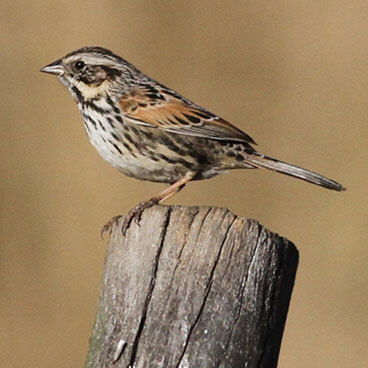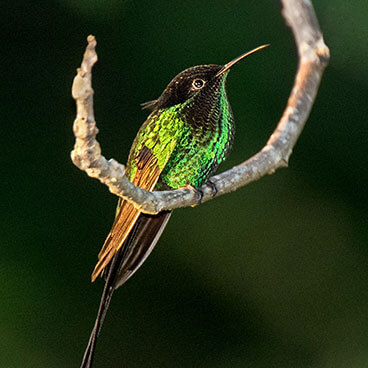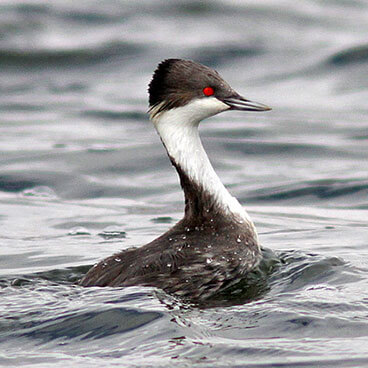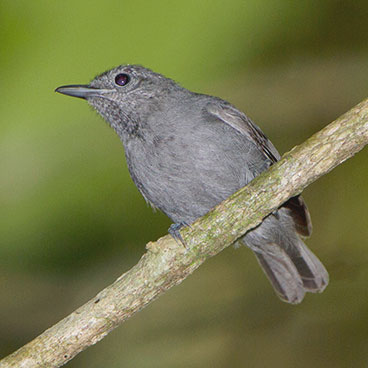Halting the extinction of the rarest birds in the Americas is essential to our mission and at the center of many of our bird reserve projects.
Globally, we help to prevent extinction by acting as Chair of the Alliance for Zero Extinction. Formed in 2000 and launched worldwide in 2005, the AZE engages more than 120 nongovernmental biodiversity conservation organizations working to prevent species extinctions. It works to safeguard the places where species evaluated to be Endangered or Critically Endangered on the IUCN Red List of Threatened Species that are restricted to single remaining sites.
Through AZE, we have identified 853 sites for 1,483 species across 18 taxonomic groups, providing a tool to defend against many of the most predictable species losses.
At ABC, we use AZE to prioritize our site-based conservation work, such as reserve creation, focusing first on AZE bird species and sites. Examples include the Yunguilla Reserve in Ecuador, created to protect the Pale-headed Brush-finch, and the Araripe Oasis Reserve in Brazil, which safeguards the Araripe Manakin.
AZE sites are a subset of Key Biodiversity Areas (KBA), defined as "sites contributing significantly to the global persistence of biodiversity." A Global Standard for the identification of KBAs was launched in 2016. Confirmed AZE sites represent those KBAs identified under criterion A1e in this Standard. Over 16,000 KBAs have been identified to date in terrestrial, freshwater, and marine ecosystems and in all countries worldwide.
The KBA Partnership was launched in 2016 to advance the identification, documentation, update, monitoring, and conservation of KBAs worldwide. The Partnership comprises: American Bird Conservancy, BirdLife International, International Union for the Conservation of Nature, Amphibian Survival Alliance, Conservation International, Critical Ecosystem Partnership Fund, Global Environment Facility, Global Wildlife Conservation, NatureServe, Rainforest Trust, Royal Society for the Protection of Birds, Wildlife Conservation Society, and World Wildlife Fund.
Data on KBAs and information on the KBA Partnership and program are available at www.keybiodiversityareas.org.

In 2020, an ABC-supported research team determined that the Critically Endangered Short-crested Coquette (featured), which is only found at the Sierra de Atoyac AZE site in Mexico, occurs in more habitat types than previously believed. This information will be used to direct conservation actions.

The Mexican government’s National Commission for the Knowledge and Use of Biodiversity (CONABIO) held workshops with several states on AZE in 2019, and is now signing Memoranda of Understanding with states on their commitment to AZE site conservation. These efforts should help conserve many threatened species, such as the Sierra Madre Sparrow (featured).

In 2018, one of Jamaica’s AZE sites that ABC works to protect, the Blue and John Crow Mountains National Park, began a new reforestation and ecotourism project. Among other birds, this AZE site is home to the resplendent Black-billed Streamertail (featured).

ABC partner Fundaçao Biodiversitas led the identification of 146 Brazilian AZE sites for 230 species, including 30 birds, in 2017. Several of these birds, such as Lear’s Macaw (featured) and Araripe Manakin, have benefited from ABC support.

ABC worked with governmental and NGO partners in 2018 to successfully advocate for the inclusion of AZE site conservation in global biodiversity goals recommended by the Convention on Biological Diversity. (Junin Grebe featured.)

The global project, “Alliance for Zero Extinction (AZE): Conserving Earth’s Most Irreplaceable Sites for Endangered Biodiversity,” was successfully completed in 2019. Results included stronger protections for several AZE sites that are home to threatened birds that are ABC priorities, such as the Alagoas Antwren (featured) in Brazil.